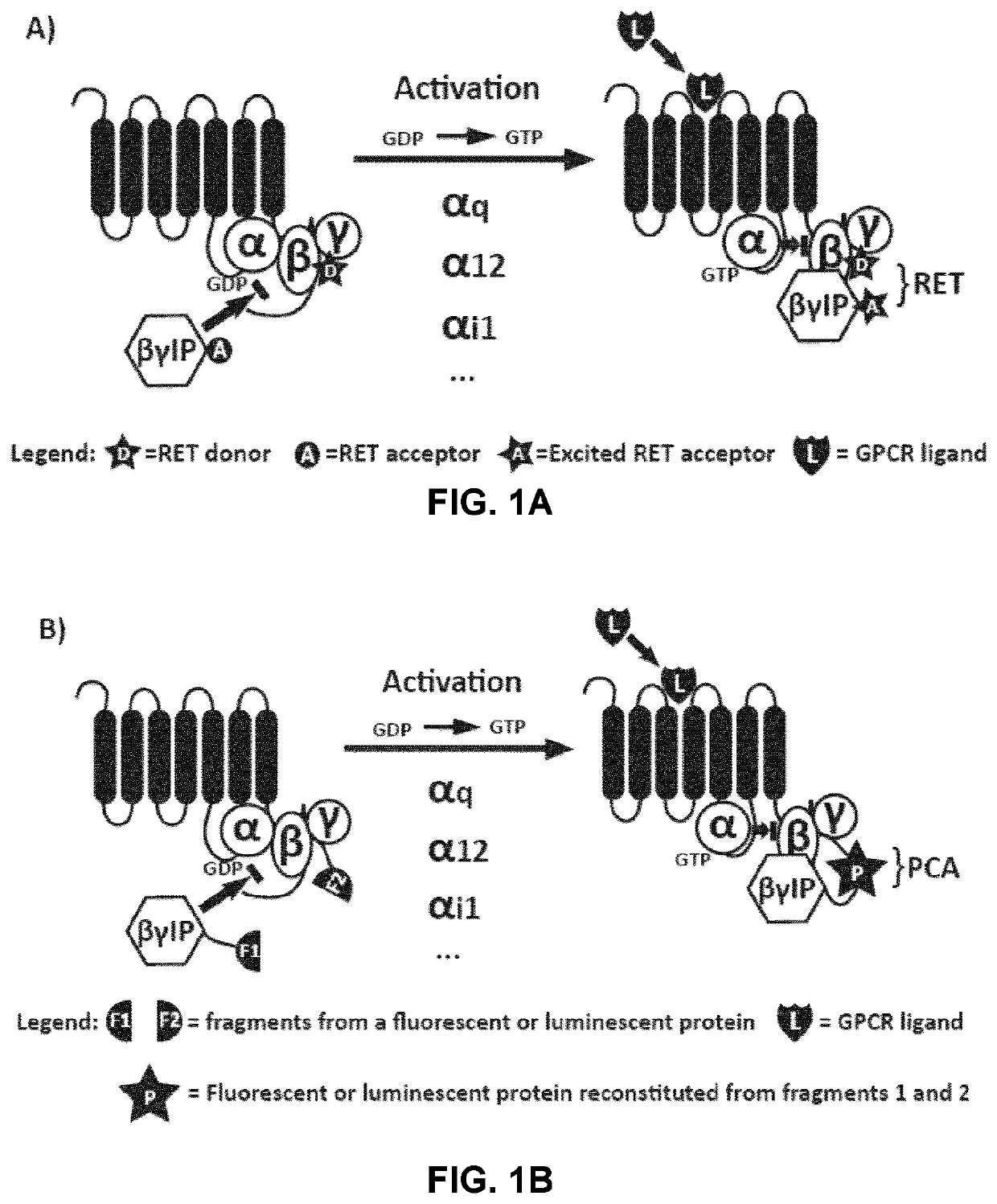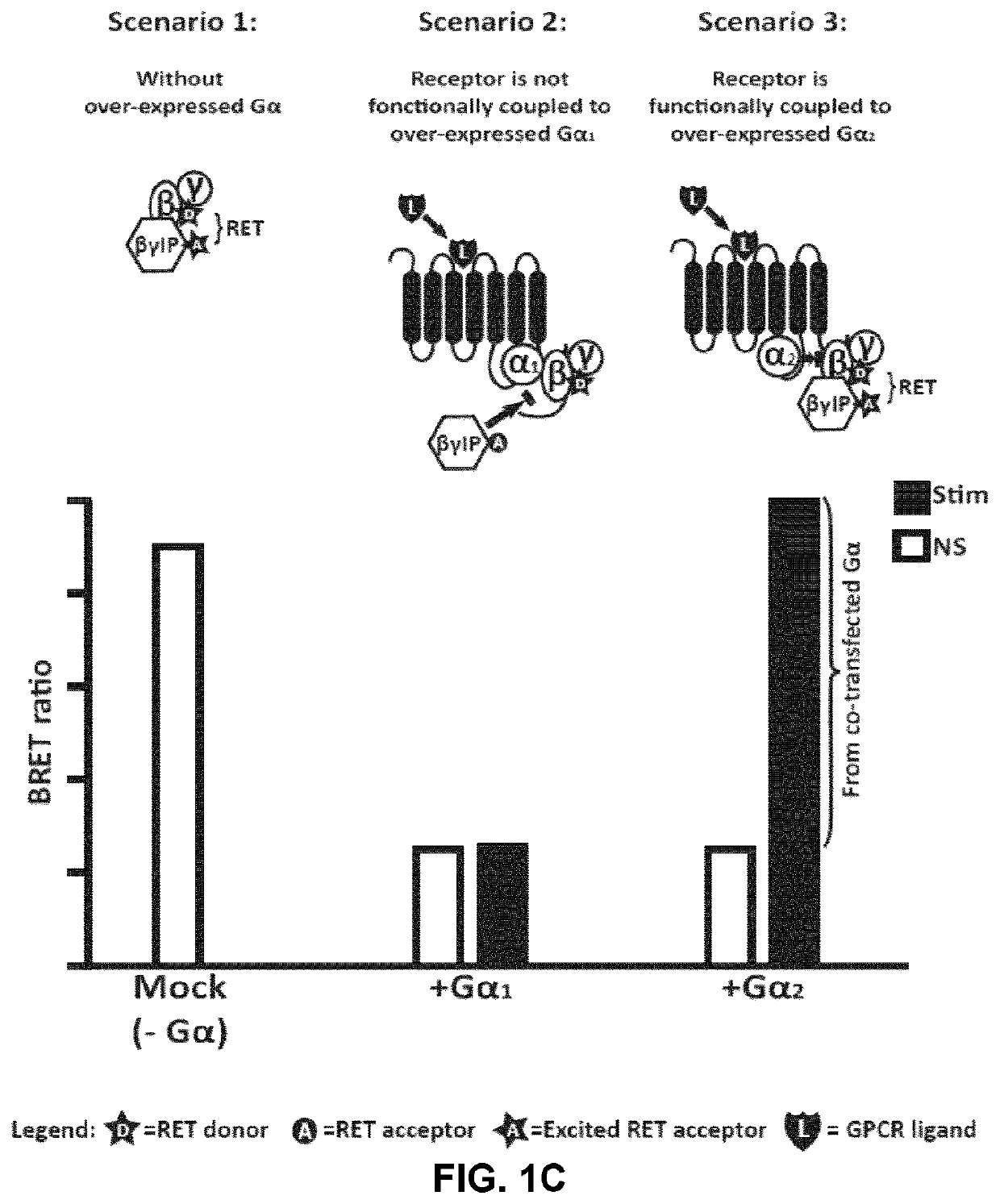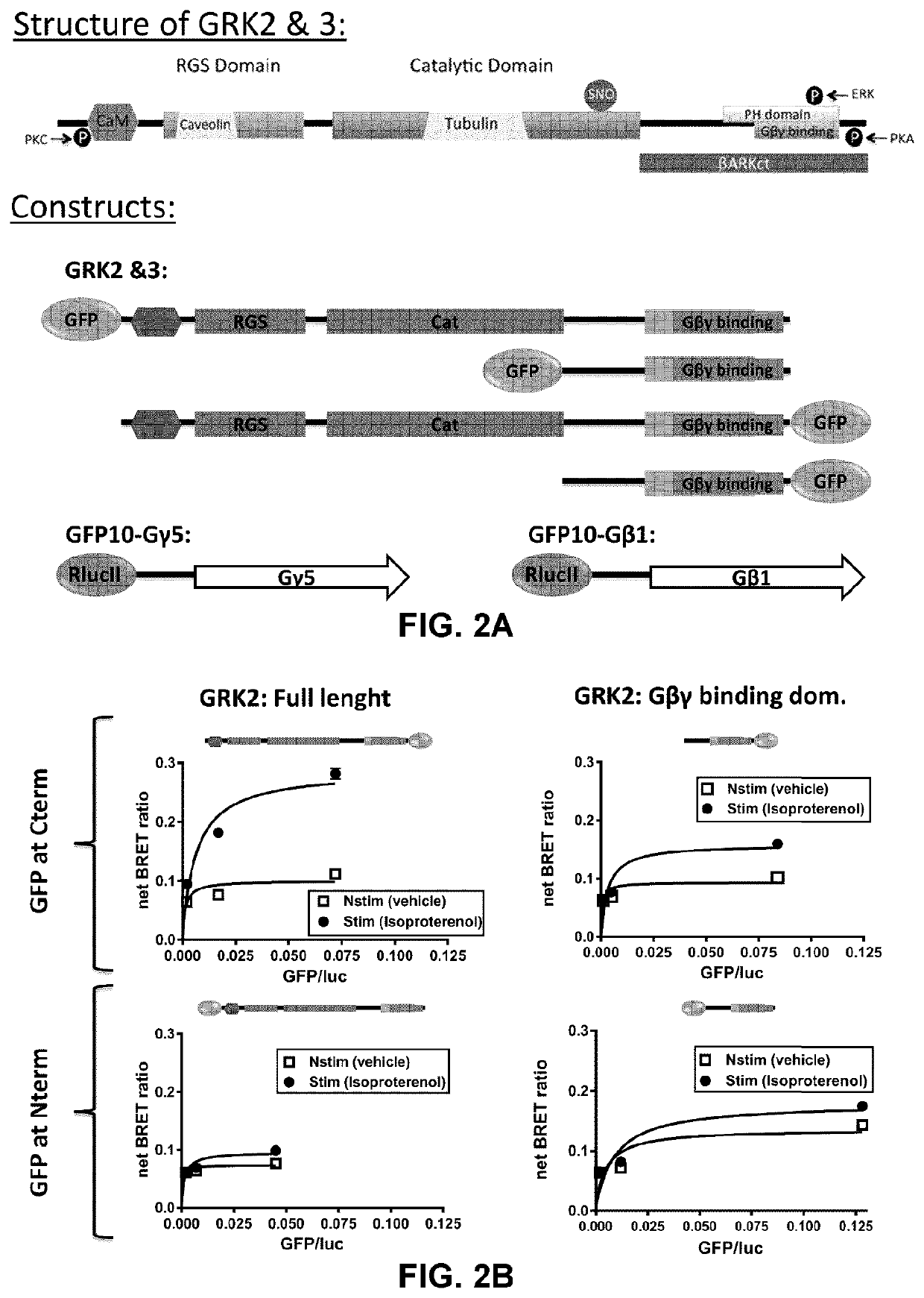Biosensor based on Gβγ-interacting proteins to monitor G-protein activation
a biosensor and gprotein technology, applied in the direction of peptides, enzymology, fluorescence/phosphorescence, etc., can solve the problems of inability to study all the different gproteins using the same detection partners, and the dearth of information available in the field of biosensors for detecting gprotein activation
- Summary
- Abstract
- Description
- Claims
- Application Information
AI Technical Summary
Benefits of technology
Problems solved by technology
Method used
Image
Examples
example 1
Materials and Methods
[0246]Reagents. Angiotensin II (AngII; [Asp-Arg-Val-Tyr-Ile-His-Pro-Phe], SEQ ID NO: 49), poly-ornithine, poly-D-lysine, isoproterenol, rotigotine, epinephrine, norepinephrine, phenylephrine and Pertussis toxin were from Sigma®. u46619 were from Cayman Chemical® (Ann Arbor, Mich.). [Sar1, Ile8]-AngII (SI) and [Asp1, Val5, Gly8]-AngII (DVG) [Sar1-Val5-D-Phe8] AngII (SVdF) and [Sar1-D-Ala8] AngII were synthesized at the University de Sherbrooke (Canada, QC). UBO-Qic (L-threonine,(3R)-N-acetyl-3-hydroxy-L-leucyl-(aR)-a-hydroxybenzenepropanoyl-2,3-idehydro-N-methylalanyl-L-alanyl-N-methyl-L-alanyl-(3R)-3-[[(2S,3R)-3-hydroxy-4-methyl-1-oxo-2-[(1-oxopropyl)amino]pentyl]oxy]-L-leucyl-N,O-dimethyl-,(7→1)-lactone (9CI)) was obtained from Institute for Pharmaceutical Biology of the University of Bonn (Germany). Dulbecco's modified Eagles medium (DMEM), fetal bovine serum, OPTI-MEM®, and other cell culture reagents were purchased from Invitrogen®. Coelenterazine 400a, Coel...
example 2
Results
[0260]To study the activation of specific G-proteins by GPCRs, an assay was developed based on the competition between Gα subunits and βγIP for their binding to Gβγ subunits. As depicted in FIGS. 1A and 1B, in the absence of receptor activation, the Gα subunit is tightly bound to the Gβγ dimer, preventing its association with the βγIP. Following receptor stimulation, the GTP-bound Gα dissociates from the Gβγ complex, which is then free to interact with the βγIP. The interaction between the βγIP and the Gβγ, therefore, reflects the G-protein activation. By co-expressing βγIP and Gβγ, each tagged with one of the two components of the detection system, with different subtypes of untagged Gα, it has been possible to determine the coupling profile of a given receptor following its activation. As shows below, different methods of detection may be used to assess the interaction between the βγIP and the Gβγ, such as resonance energy transfer (RET) approaches (FIG. 1A: bioluminescence...
PUM
| Property | Measurement | Unit |
|---|---|---|
| wavelength | aaaaa | aaaaa |
| pH | aaaaa | aaaaa |
| energy transfer | aaaaa | aaaaa |
Abstract
Description
Claims
Application Information
 Login to View More
Login to View More - R&D
- Intellectual Property
- Life Sciences
- Materials
- Tech Scout
- Unparalleled Data Quality
- Higher Quality Content
- 60% Fewer Hallucinations
Browse by: Latest US Patents, China's latest patents, Technical Efficacy Thesaurus, Application Domain, Technology Topic, Popular Technical Reports.
© 2025 PatSnap. All rights reserved.Legal|Privacy policy|Modern Slavery Act Transparency Statement|Sitemap|About US| Contact US: help@patsnap.com



